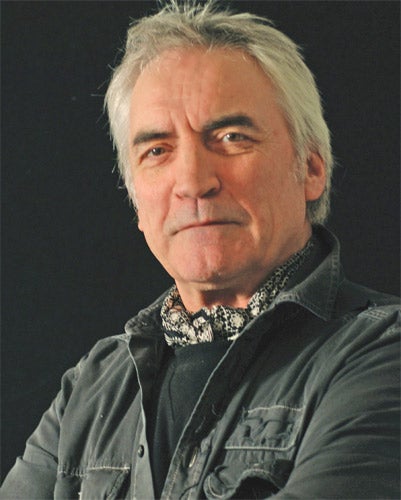For those who knew the poet and designer David Chaloner the loss of his death is softened only by the great affection and the fine body of work that he leaves. "Console me in my absence because of my absence / Console my absence in place of me" (Art for Others, 1998). His Collected Poems (2005) runs to 435 pages and demonstrates what the late Andrew Crozier, in a cover note, described as its "variousness and power to astonish" and its "core consistency". He worked in design from 1960 and his first published booklet came out in 1969.
His route into these parallel careers was in no way typical. Brought up in a rural part of Cheshire to parents for whom the education world was alien, he had to find his own way, and did so remarkably, leaving school at 15, receiving early training at Macclesfield Art School, and allowing one reading discovery to lead to another. He talks most entertainingly about this period in a wonderful interview by Andrew Duncan published in Don' Start Me Talking. His intelligence – his intellectual sensitivity and responsiveness, and his impulse from a very early age to shape and articulate this in words and in two- and three-dimensional shapes – was not of the kind that wins places in grammar schools and so he was spared the "education" of most of his peers.
At the age of 20 work of his was included in the paperback Generation X, and a few years later in Michael Horovitz's Children of Albion. During this time he made contact with the poet and small press publisher Andrew Crozier, who was looking for writers whose engagement through language with their world was immediate and thoughtful. This contact put David in touch with a number of young writers who had come to know each other through Crozier's English Intelligencer, and who were later anthologised in A Various Art. Chaloner's first book was published by Crozier's Ferry Press.
Meanwhile his work in design prompted a move in 1973 from the north-west to London. This work involved him with Letraset, Harvey Nichols, Jean Paul Gaultier and Jean Muir among others. Later he worked with the Conran organisation, first as retail design director of the Conran Design Group, and then as interior and retail design director of Conran & Partners. Finally, with Joyce Huisman, he set up a design business, Chaloner Huisman, in Amsterdam, and commuted weekly. He was admired by colleagues for his generosity and openness, his interest in sustainability (ahead of time), and for his assumption that design should always be in the interests of people.
His life in international design found its way into his writing in two obvious ways: he became part of the tribe of aeroplane nomads, getting to know hotels throughout the world (his 1981 book, Hotel Zingo, springs from this), and developing necessarily, for such a close observer of his surrounding world, a sense of everyday relativity.
The other way is much more difficult to define, but it is to do with the fact that his poems, always strongly motivated and felt, are always also designed. He brought a double visual sensibility to his writing: an attention to the seen world, and a working of the textures and striations of lined language. He became interested later in sound, too, and how to incorporate its worlds into his own work.
Here are a few lines from Art for Others, a sequence whose anger at the political economy is managed within the design principles referred to above:
What is the meaning of a colour
with a name against it.
Unable to continue. The action of the gate.
At nightfall I am eating bread. The air
is impossible. Chill of disturbed sleep.
Days askew and uncounted.
A man with lips of mud. A kiss from within.
Sense and its surroundings. Not to be written.
Asked whether his work as poet affected his design Joyce Huisman said: "For me he was a poetical, humane designer and a poet for whom words are form and meaning. The way he used space, white space as an added dimension in his work, was amazing."
He leaves Mary, his wife and close companion of over 40 years, and his beloved daughter, Lucy.
David Chaloner, poet and designer: born 18 October 1944 (married, one daughter); died 10 May 2010.

Join our commenting forum
Join thought-provoking conversations, follow other Independent readers and see their replies
Comments